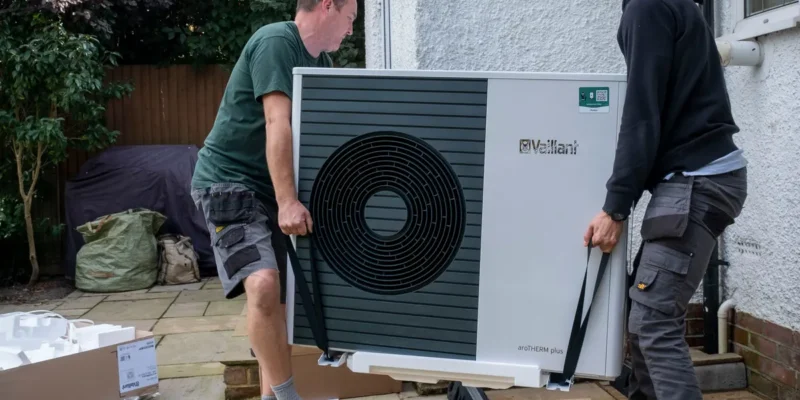Our housing must now adapt to the effects of spiraling energy costs and an intensifying climate change crisis. Our eco-armory includes better insulation, and sustainable energy sources including solar power, heat pumps, and biomass heating.
But how do they operate, how much do they cost, and is my property appropriate for a renewable energy option like a Vaillant air source heat pump?
Definition: An air source heat pump is one of the most popular kinds of heat pumps, utilizing technology similar to that found in a freezer. It transmits heat from one medium to another, in other words, by absorbing heat.
In essence, it draws heat energy from the air, regardless of the outside temperature, and uses it to supply your home’s demands for heating and hot water. Although some electricity is used, it only accounts for 25% of the total energy required. The remaining 75% comes from renewable resources.
There are two types of air-source heat pumps that can be installed outside of a house, with air-to-water systems being the most popular. Through the use of radiators or an underfloor heating system, this system warms the water that is subsequently distributed throughout the house.
Additionally, it can be used to warm water in a storage tank for the kitchen or bathroom. On the other hand, air-to-air systems cannot be used to heat water; instead, they commonly use fans to move warm air around the house. Since the air-to-air system has a reverse function, it may also be used as an air conditioner in the summer to provide cool air.
What is the price of an air source heat pump?
A home’s size, the size of the heat pump, and whether it is a newly constructed or existing building will all affect the price. They can cost between £900 and £1000, although homeowners may need to alter how heat is delivered throughout their residence.
It might be necessary to add underfloor heating or upgrade the radiators, and a well-insulated home is also a requirement.
How Does a Heat Pump’s Heating Effect Operate?
A heat pump, as you are probably aware, moves little amounts of thermal energy from the outside into your house. To deliver heating or cooling effects in your home, it draws on higher temperature warmth or natural cools in the surrounding environment.
The appliance will deliver the heat directly into your home after it has been absorbed, compressing it and enabling heat transfer through coils.
You might compare these gadgets to a refrigerator due to the effectiveness of this heating system. Here, the cooling of a liquid causes heat to evaporate, bringing the temperature down.
These four fundamental procedures make a heat pump function.
Ingestion: The system must first gather the heat before the process can start. It will either be absorbed from the air, the water, or the ground, depending on the type of heat pump you have in your house.
It employs a refrigerant that quickens absorption. This transition from a liquid to a gas takes place inside the evaporator.
Compression: As soon as the refrigerant transforms into a gas, it will begin to be compressed, which will exponentially raise the temperature. As a result, during the winter, hot air will be circulated.
With this heat, you can warm water, radiators, and other things. When the heat pump is set to heat, the entire procedure is reversed.
Condensation: The refrigerant will return to a liquid state after finishing its heating task. With these pumps, condensation develops in a different heat exchanger tube.
The efficiency will increase gradually as a result of this process. How come? Well, the temperature of the liquid refrigerant keeps getting absorbed by the heat from the central heating system.
The procedure goes on: After changing from a gas to a liquid, the refrigerant passes via an expansion valve. Only when the liquid has finished cooling down following the heating or cooling procedure does this phase take place.
The liquid lowers the pressure after it enters the valve. After the release, the liquid returns to the evaporator to start the process from scratch.
Ingestion, Compression, condensation, and absorption are used by all of the devices to make it operate. For instance, you’ll require less maintenance, pay less to operate, and be safer. Additionally, Vaillant Air Source Heat Pump offers appropriate cooling and heating effects over the course of its lifecycle.










Comments